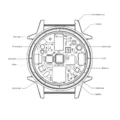Ever watched your furry best friend chasing squirrels or napping in a sunbeam and wondered about that tiny piece of technology potentially resting right under their skin? It’s not science fiction; it’s likely an RFID microchip, a simple yet ingenious device that serves as a crucial safety net for our beloved companions.
But what exactly *is* it, and how does this almost invisible speck function? Let’s pull back the curtain on this passive powerhouse of pet identification.
Table of Contents
Beyond the Collar: What is a Pet Microchip?
Think of a pet microchip not as a high-tech gadget with flashing lights or a power source, but more like a miniature, permanent ID tag implanted just beneath your pet’s skin, typically between the shoulder blades. Roughly the size of a grain of rice, it’s encased in a biocompatible glass capsule.
Inside this tiny capsule are three main components:
- A silicon chip (the brains, storing the unique ID number)
- A tiny antenna (to receive and transmit signals)
- A capacitor (to store the brief energy received from a scanner)
Unlike traditional ID tags on collars, which can fall off, break, or become illegible, a microchip provides a durable, internal form of identification linked directly to you.
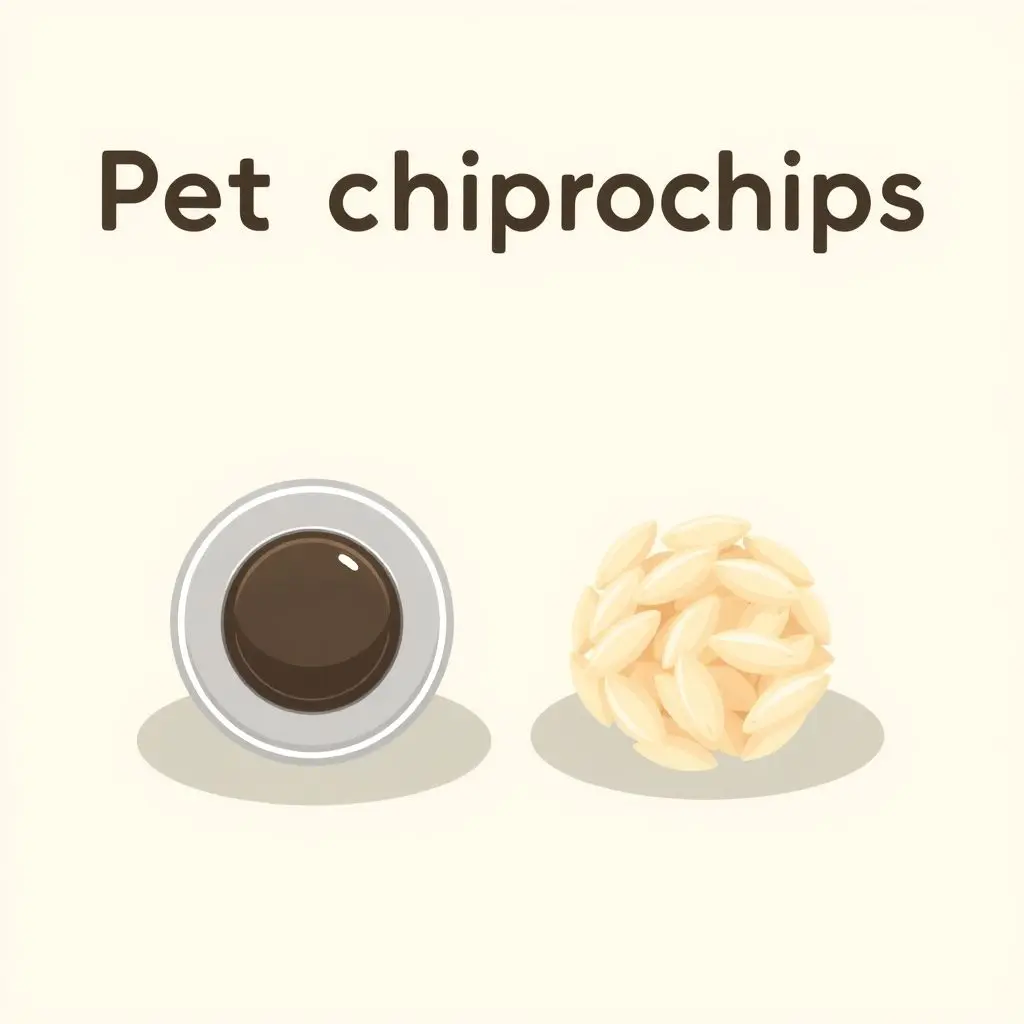
The Passive Power Play: How It Actually Works
Here’s where the magic, or rather, the clever physics, comes in. A pet microchip is passive RFID technology. This means it has no internal battery and no way to generate its own power or transmit a signal constantly. It’s essentially dormant until called upon.
Its operation relies entirely on an external device: a compatible microchip scanner.
The Scanner Sends a Signal: When a scanner is passed over the area where the chip is implanted, it emits low-frequency radio waves.
The Chip Powers Up: The antenna within the passive microchip captures energy from these radio waves via electromagnetic induction. This harvested energy is just enough to momentarily power the tiny chip.
The Chip Transmits Its ID: Now powered, the chip activates and sends its unique, pre-programmed identification number back through its antenna to the scanner.
The Scanner Reads the ID: The scanner receives this transmitted number and displays it on its screen. This number is a series of digits (usually 9 to 15 depending on the standard, like ISO 11784/11785) unique to that specific chip.
That’s it. The chip doesn’t store your address, phone number, or your pet’s medical history. It *only* holds that singular, unique identification number.
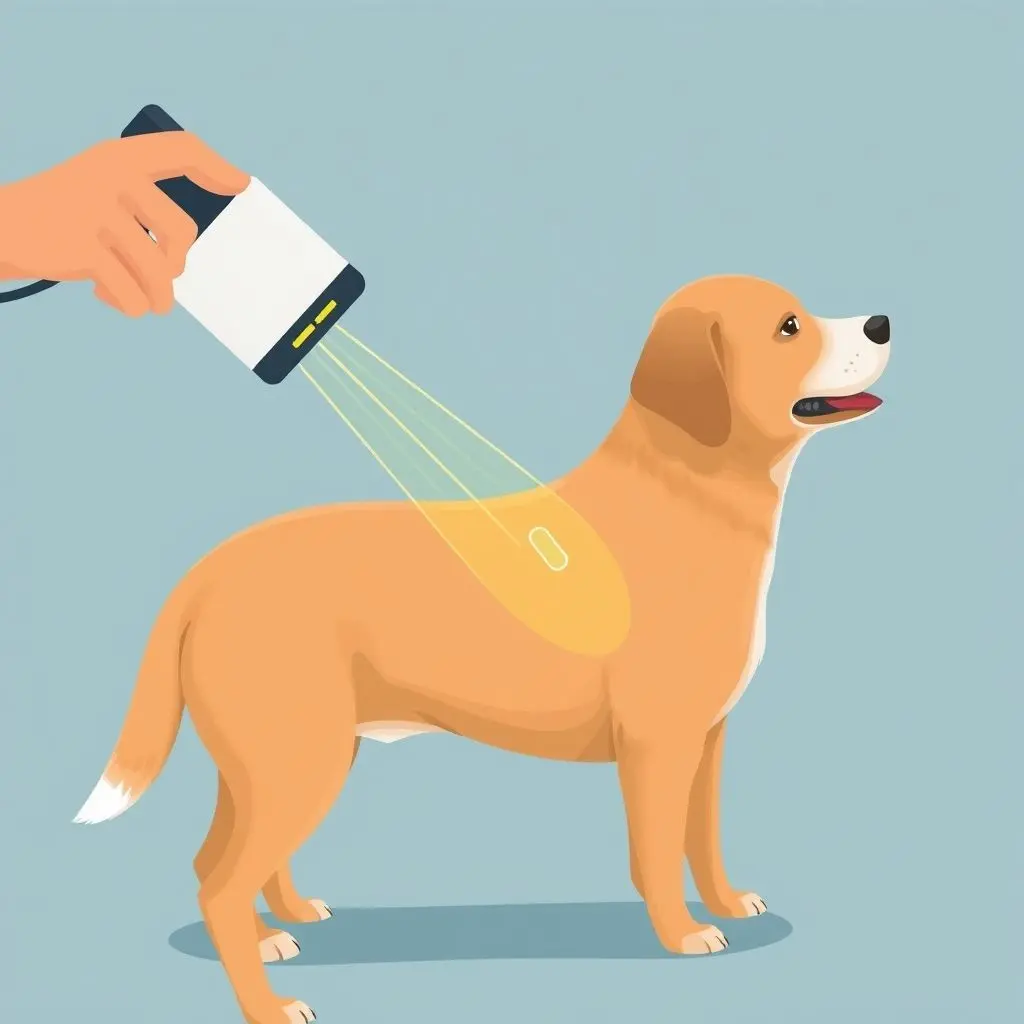
A Quick Visual Snackable?
If you’re someone who prefers a quick visual explanation to digest the basics, here’s a snappy short video that breaks down the core concept:
The Critical Connection: ID Number + Database
Receiving a 15-digit number from a scanner is useless on its own. The true power and purpose of the microchip system lie in the second, equally vital step: the database.
When you get your pet microchipped, you, or more commonly your vet or shelter, must register that unique chip ID number with a secure, online pet recovery database. This is where your contact information (name, address, phone number, email) is stored, linked to that specific ID.
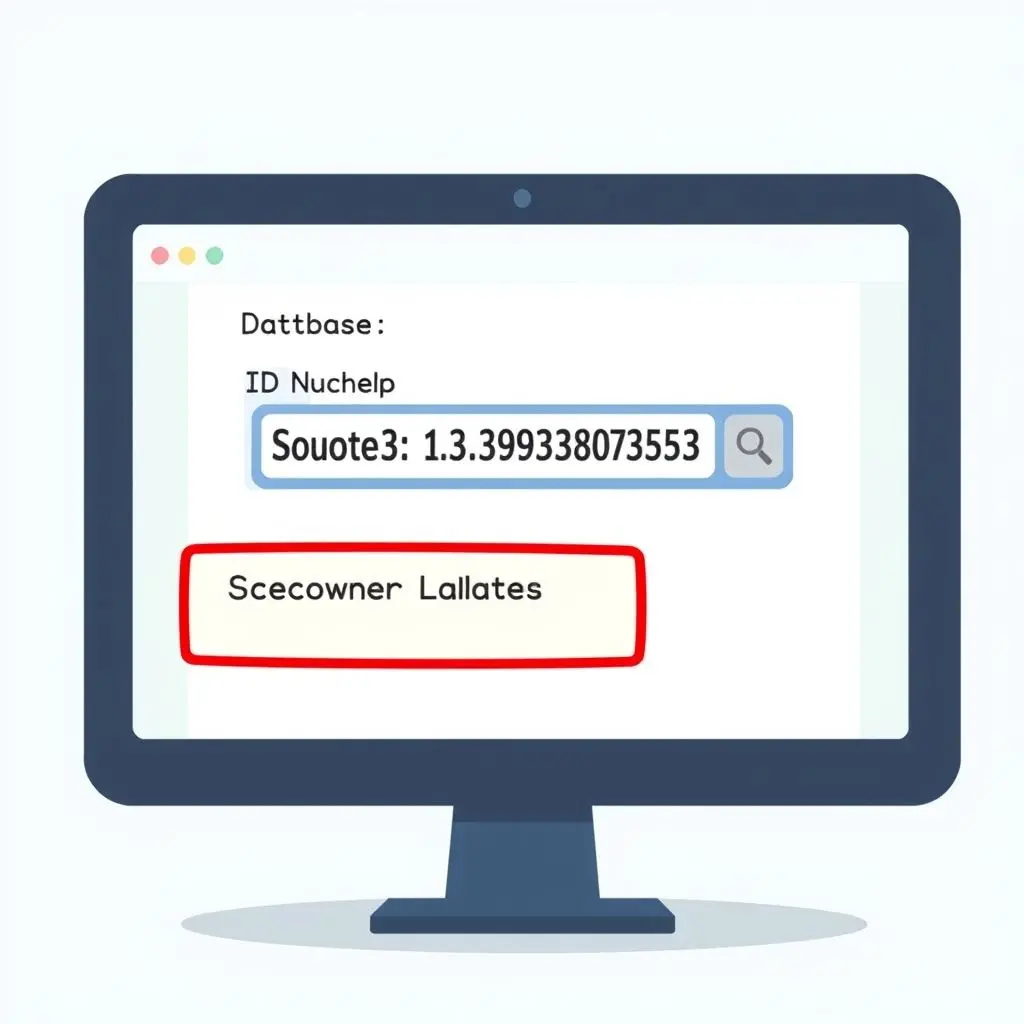
There are several reputable pet recovery databases (e.g., AKC Reunite, HomeAgain, PetLink, Found Animals, etc.). Some are associated with specific chip brands, while others are universal. The key is to choose a reliable one and, crucially, keep your contact information updated if you move or change phone numbers.
When a lost pet is found and scanned by a vet clinic, animal shelter, or rescue group (which are typically equipped with scanners and procedures to check for microchips), they get the ID number. They then enter this number into a database search tool. If the chip is registered and the information is current, the database provides the finder with your contact details, enabling them to reunite you with your pet.
Why Microchipping is More Than Just Tech
Microchipping isn’t just a neat tech trick; it’s a fundamental layer of safety for pets. It dramatically increases the chances of a lost pet being returned home compared to relying solely on collars and tags.
- Permanent: It cannot be lost like a collar.
- Standardized: Most modern chips and scanners use standardized frequencies (ISO 11784 and 11785), meaning chips can be read by different brands of scanners.
- Proven: Pet recovery statistics show a significantly higher return-to-owner rate for microchipped pets.
In many places, microchipping is now required by law for adopted pets or even all owned dogs and cats.
The Implantation Process: Quick and Simple
Getting a pet microchipped is a straightforward procedure, similar to a routine vaccination. A veterinarian or trained technician uses a sterile syringe to inject the microchip (preloaded in the needle) under the skin, usually in the subcutaneous tissue between the pet’s shoulder blades. Most pets react minimally, experiencing only brief discomfort comparable to receiving a shot. No anesthetic is required.
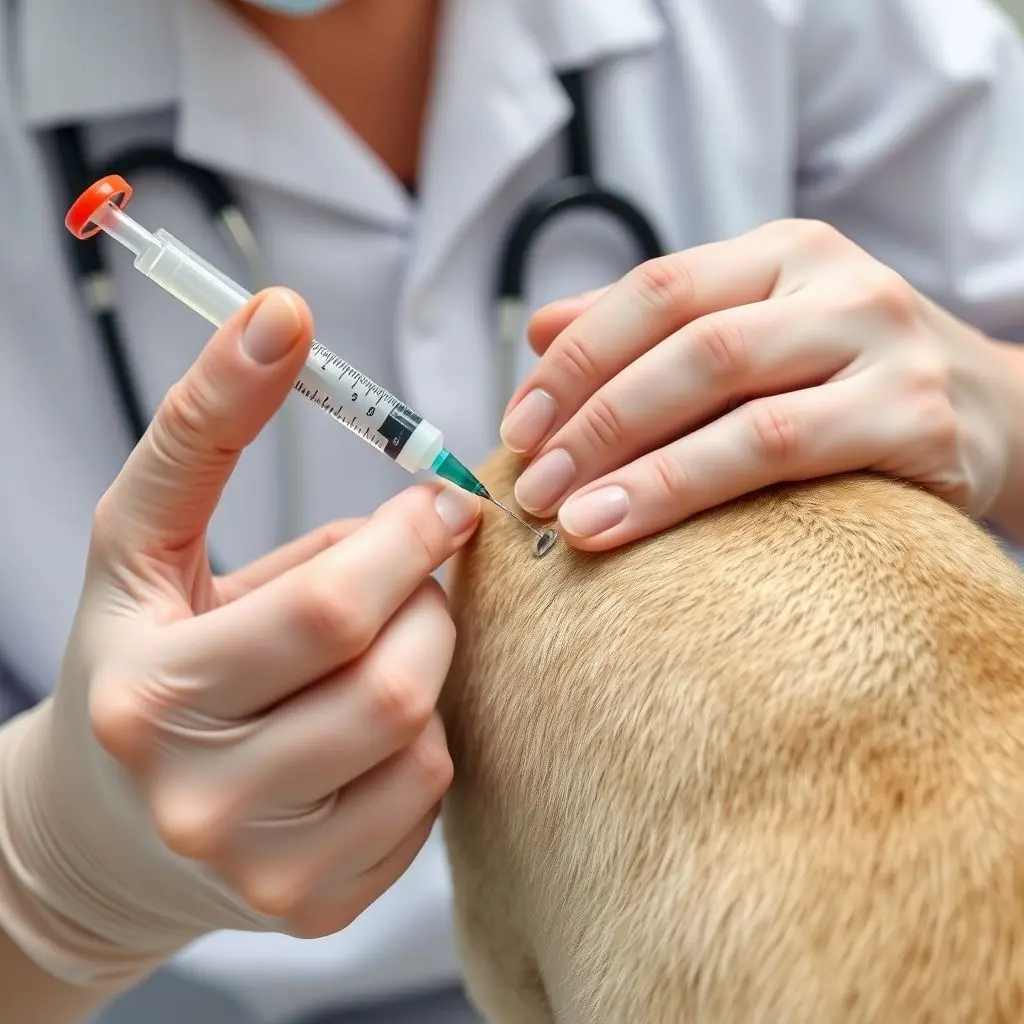
Common Microchip Myths Debunked
Let’s clear up some common misunderstandings:
- MYTH: It’s a GPS tracker.
FACT: Absolutely not. Passive RFID chips cannot transmit location data. They only provide a static ID number when scanned. GPS requires a power source and complex technology that doesn’t fit in a grain-sized chip. - MYTH: It stores all my pet’s medical history.
FACT: No, it only stores the unique identification number. Any link to medical history would have to be stored separately in a veterinary database and linked manually via the pet’s name or owner information once reunification occurs. - MYTH: It constantly broadcasts my pet’s location.
FACT: As a passive device, it cannot broadcast anything constantly. It only transmits its ID number when actively powered by a scanner. - MYTH: Any scanner can read any chip.
FACT: While most modern chips adhere to ISO standards (11784/11785 FDX-B), some older chips use different frequencies (like 125 kHz or 128 kHz). Most shelters and vets have universal scanners capable of reading common frequencies, but compatibility isn’t 100% guaranteed for ancient or non-standard chips. ISO chips are the global standard.
Maintaining the Safety Net: Beyond Implantation
Getting the chip is just the first step. To ensure it works when needed:
- Register It: Immediately after implantation, make sure the chip is registered with a reputable database. If your vet or shelter does it for you, confirm that it’s done and you have the registration details.
- Keep Info Updated: Every time you change your address, phone number, or email, log into your database account and update your information. This is the single most common reason microchips fail to reunite pets and owners.
- Check Annually: Ask your vet to scan your pet’s chip during their annual check-up to confirm it’s still in place and functional.
Frequently Asked Questions
Does microchipping hurt the pet?
It’s a quick injection similar to a vaccination. Most pets show minimal reaction, comparable to receiving any other shot. The discomfort is very brief.
Does the microchip need a battery?
No, it is a passive RFID device. It’s powered externally by the radio waves from a scanner.
Can a microchip track my pet’s location?
Absolutely not. Microchips are not GPS devices. They only provide a unique ID number when scanned at close range.
Can the microchip store my pet’s medical records?
No, the microchip itself only stores the unique identification number. Medical records are kept by your veterinarian or potentially in separate online pet profiles linked to the chip number in some advanced database systems, but not on the chip itself.
How long does a pet microchip last?
Microchips are designed to last for your pet’s lifetime. Since they have no moving parts or battery, they generally do not fail once implanted correctly.
What if my pet’s microchip isn’t registered or my information is outdated?
This is a critical point. If the chip is unregistered or the contact information linked to it is old, the finder will only get an ID number that cannot be traced back to you. Registration and updated information are essential for the system to work.
Are all microchip scanners compatible with all microchips?
Most modern scanners read the common ISO 11784/11785 standard chips (FDX-B). However, some older or non-standard chips might require specific scanners. Shelters and vets typically have universal scanners to maximize compatibility.
A Small Step for Pet Safety
That tiny chip, smaller than a single grain of rice, represents a significant layer of security for your beloved animal companion. It’s a permanent, reliable form of identification that bridges the gap between a lost pet and a worried owner, all activated by a simple scan and a crucial database entry. It offers peace of mind, knowing that if your pet ever wanders too far, this unseen technology provides a powerful link back home.



